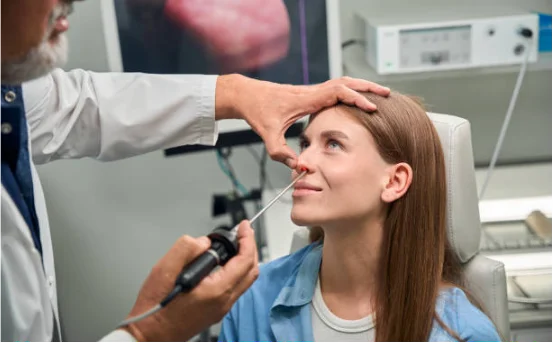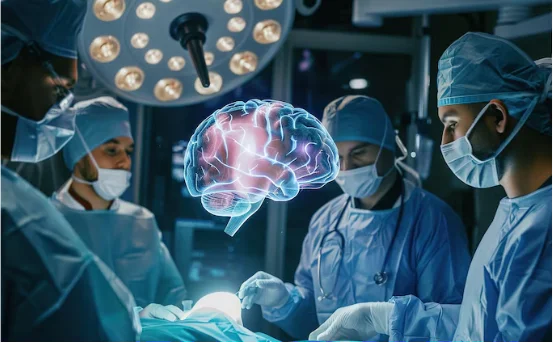In the ever-changing field of neurosurgery as well as ENT (ear nasal, and throat) treatment, Endoscopic Endonasal Surgery (EES) is emerging as an important game changer. This minimally-invasive surgical method permits neurosurgeons as well as ENT experts to address difficult issues such as pituitary tumors or skull base tumors and sinus lesions by utilizing the nasal passages without external incisions.
In contrast to conventional open-brain surgeries which require more incisions as well as long recovery times, endoscopic procedure provides patients with an easier, more comfortable and more efficient alternative. As a procedure that is highly sophisticated that combines the accuracy of endoscopy and the ease of access to the nasal cavity, providing the best results for a wide range of sinus and cranial issues.
If you’re a patient searching for alternatives or a caregiver looking for clarity, knowing the procedure for treatment Endoscopic Endonasal Surgery can help make educated healthcare choices.
What is Endoscopic Endonasal Surgery?
The Benefits of Endoscopic Endonasal Surgery
Endoscopic Endonasal Surgery (EES) is a minimally-invasive procedure that utilizes a thin and flexible instrument known as an endoscope, equipped with a bright and high-definition camera – to locate abnormalities or tumors found on the bottom of skull in the skull, and in the nasal passages.
Through the nostrils of one or both the surgeons can create narrow surgical pathways, permitting them to remove or treat
- Adenomas of the pituitary
- Craniopharyngiomas
- Chordomas
- Meningiomas
- Sinus tumors
- Cerebrospinal Fluid (CSF) leaks
- Compression of the optic nerve
Why Choose Endoscopic Endonasal Surgery?
Physicians and patients alike are increasingly relying on endoscopic endonasal surgery for its accuracy security, safety, and shorter time to recover. Let’s look at the main reasons why this approach to surgery is unique.
- Minimally Invasive Access :- In avoiding external cuts, EES removes the necessity for facial cut or craniotomies. This reduces the risk of scarring, but also decreases the chance of bleeding, infection and trauma to the tissues surrounding it.
- Shorter Hospital Stay & Faster Recovery :- The majority of patients who undergo EES have faster recovery times in comparison to conventional surgeries. In many instances the hospitalization time is between about 1-3 days. Then, the getting back to work is quicker.
- Improved Surgical Precision :- With the aid of sophisticated navigation instruments and high-definition endoscopic visualization, surgeons are able get to tumors that are deep-seated with greater precision. This means more complete surgery and less complications.
- Preservation of Brain Function & Aesthetics :- Since the brain’s structure is not affected by the endonasal pathway this reduces the risk of having neurological issues. Additionally the procedure is carried out completely through the nose which preserves the appearance of the patient.
- Multi-disciplinary Collaboration :- EES is usually done by a team of specialists, including neurosurgeons ENT radiologists and surgeons to provide comprehensive care for ailments that affect the brain as well as sinuses.
The Treatment Process: Step-by-Step
- Diagnosis & Imaging :- Your journey begins with precise imaging using MRI or CT scans to determine the size, shape, as well as the location and size of lesion or tumor. Other ophthalmological or endocrinological tests could be performed based on the nature of the tumor.
- Surgical Planning :- After it is established that the condition has been confirmed an expert team develops the most appropriate surgical strategy. 3-D systems for surgical navigation are commonly employed to direct the path and to identify the most important areas to stay clear of.
- The Procedure :- The endoscope is numb under general anesthesia. It can be placed through one or both nostrils. Surgery is then performed using micro-instruments that locate and eliminate the tumor or rectify the issue (e.g. repair of the leak of CSF leak). The entire procedure is done while observing the internal anatomy of the body via the monitor.
- Closure & Reconstruction :- After removal of the tumor the area is rebuilt with natural tissue grafts or synthetic materials to stop CSF leakage and to ensure the stability.
- Postoperative Care & Monitoring :- Patients are closely monitored for indications of hormonal imbalances, infections (especially during pituitary surgery) and the healing of the nasal passages. In addition, nasal irrigation, antibiotics and subsequent MRIs are a part of the post-op treatment plan.
Who is a Candidate for Endoscopic Endonasal Surgery?
You might be a good candidate If you have:
- Pituitary tumors that cause vision or hormonal issues
- CSF leaks can cause chronic headaches or even infections
- Chronic nasal obstructions caused tumors
- Non-cancerous tumors like meningiomas or craniopharyngiomas
- Tumors located at in the middle of brain, or in the sinus cavities.
However, eligibility is based on factors such as tumor size and location, age of patient overall health, and previous medical history. A thorough consultation with your neurosurgeon, or ENT specialist is required.
Risks and Considerations
Although EES can be considered safe in general, like any surgery there are risks:
- Crusting or nasal congestion
- Cerebrospinal fluid leakage
- Infection
- Bleeding
- Permanent or temporary hormonal imbalances (if pituitary gland involvement is present)
- Visual changes
Selecting a skilled surgical team can significantly lower the risk of complications, and also improves the outcomes.
Conclusion
Endoscopic Endonasal Surgery represents a significant improvement when it comes to treating skull sinus, and base tumors. Its minimally-invasive approach that is accompanied by rapid recovery, high accuracy, as well as minimal damage to the surrounding tissues, makes it the preferred option for both patients and surgeons.
If you or someone close to you is found to have a cancer close to the sinus cavity or brain considering the option of endoscopic surgery for endonasal tumors could be a life-altering choice. Always consult a certified doctor or neurosurgeon to determine the possibility of this cutting-edge procedure being the right choice for your particular situation.























